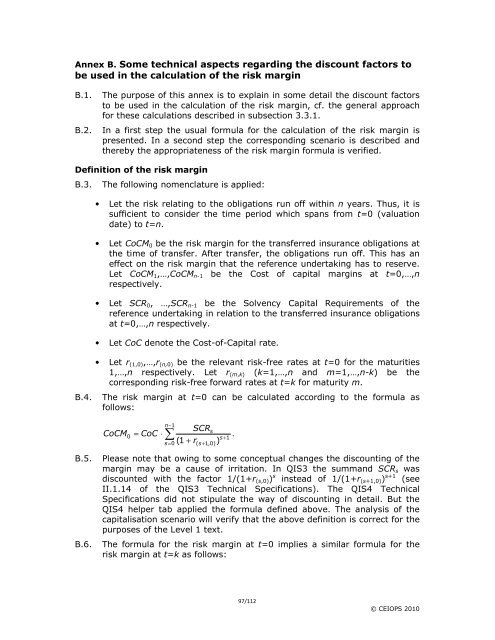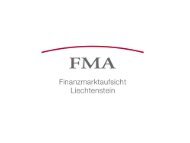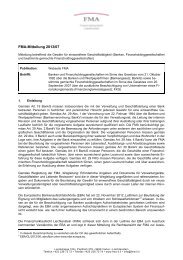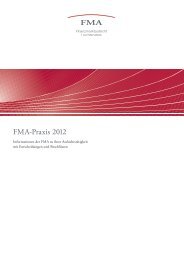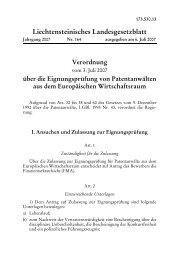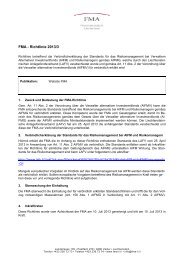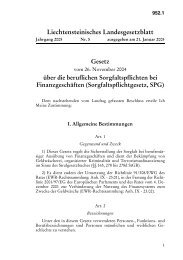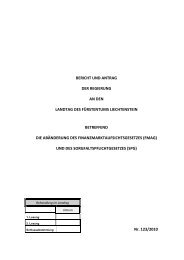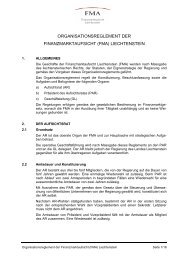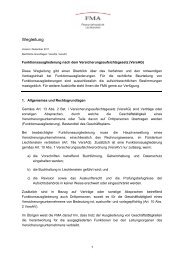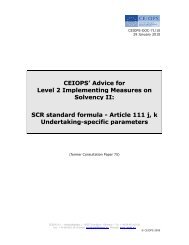CEIOPS' Advice for Level 2 Implementing ... - EIOPA - Europa
CEIOPS' Advice for Level 2 Implementing ... - EIOPA - Europa
CEIOPS' Advice for Level 2 Implementing ... - EIOPA - Europa
Create successful ePaper yourself
Turn your PDF publications into a flip-book with our unique Google optimized e-Paper software.
Annex B. Some technical aspects regarding the discount factors to<br />
be used in the calculation of the risk margin<br />
B.1. The purpose of this annex is to explain in some detail the discount factors<br />
to be used in the calculation of the risk margin, cf. the general approach<br />
<strong>for</strong> these calculations described in subsection 3.3.1.<br />
B.2. In a first step the usual <strong>for</strong>mula <strong>for</strong> the calculation of the risk margin is<br />
presented. In a second step the corresponding scenario is described and<br />
thereby the appropriateness of the risk margin <strong>for</strong>mula is verified.<br />
Definition of the risk margin<br />
B.3. The following nomenclature is applied:<br />
• Let the risk relating to the obligations run off within n years. Thus, it is<br />
sufficient to consider the time period which spans from t=0 (valuation<br />
date) to t=n.<br />
• Let CoCM0 be the risk margin <strong>for</strong> the transferred insurance obligations at<br />
the time of transfer. After transfer, the obligations run off. This has an<br />
effect on the risk margin that the reference undertaking has to reserve.<br />
Let CoCM1,…,CoCMn-1 be the Cost of capital margins at t=0,…,n<br />
respectively.<br />
• Let SCR0, …,SCRn-1 be the Solvency Capital Requirements of the<br />
reference undertaking in relation to the transferred insurance obligations<br />
at t=0,…,n respectively.<br />
• Let CoC denote the Cost-of-Capital rate.<br />
• Let r(1,0),…,r(n,0) be the relevant risk-free rates at t=0 <strong>for</strong> the maturities<br />
1,…,n respectively. Let r(m,k) (k=1,…,n and m=1,…,n-k) be the<br />
corresponding risk-free <strong>for</strong>ward rates at t=k <strong>for</strong> maturity m.<br />
B.4. The risk margin at t=0 can be calculated according to the <strong>for</strong>mula as<br />
follows:<br />
∑ − n 1<br />
s=<br />
0<br />
SCR<br />
CoCM 0 = CoC ⋅<br />
.<br />
( 1 + r<br />
s<br />
s+<br />
1<br />
( s+<br />
1,<br />
0)<br />
)<br />
B.5. Please note that owing to some conceptual changes the discounting of the<br />
margin may be a cause of irritation. In QIS3 the summand SCRs was<br />
discounted with the factor 1/(1+r(s,0)) s instead of 1/(1+r(s+1,0)) s+1 (see<br />
II.1.14 of the QIS3 Technical Specifications). The QIS4 Technical<br />
Specifications did not stipulate the way of discounting in detail. But the<br />
QIS4 helper tab applied the <strong>for</strong>mula defined above. The analysis of the<br />
capitalisation scenario will verify that the above definition is correct <strong>for</strong> the<br />
purposes of the <strong>Level</strong> 1 text.<br />
B.6. The <strong>for</strong>mula <strong>for</strong> the risk margin at t=0 implies a similar <strong>for</strong>mula <strong>for</strong> the<br />
risk margin at t=k as follows:<br />
97/112<br />
© CEIOPS 2010


